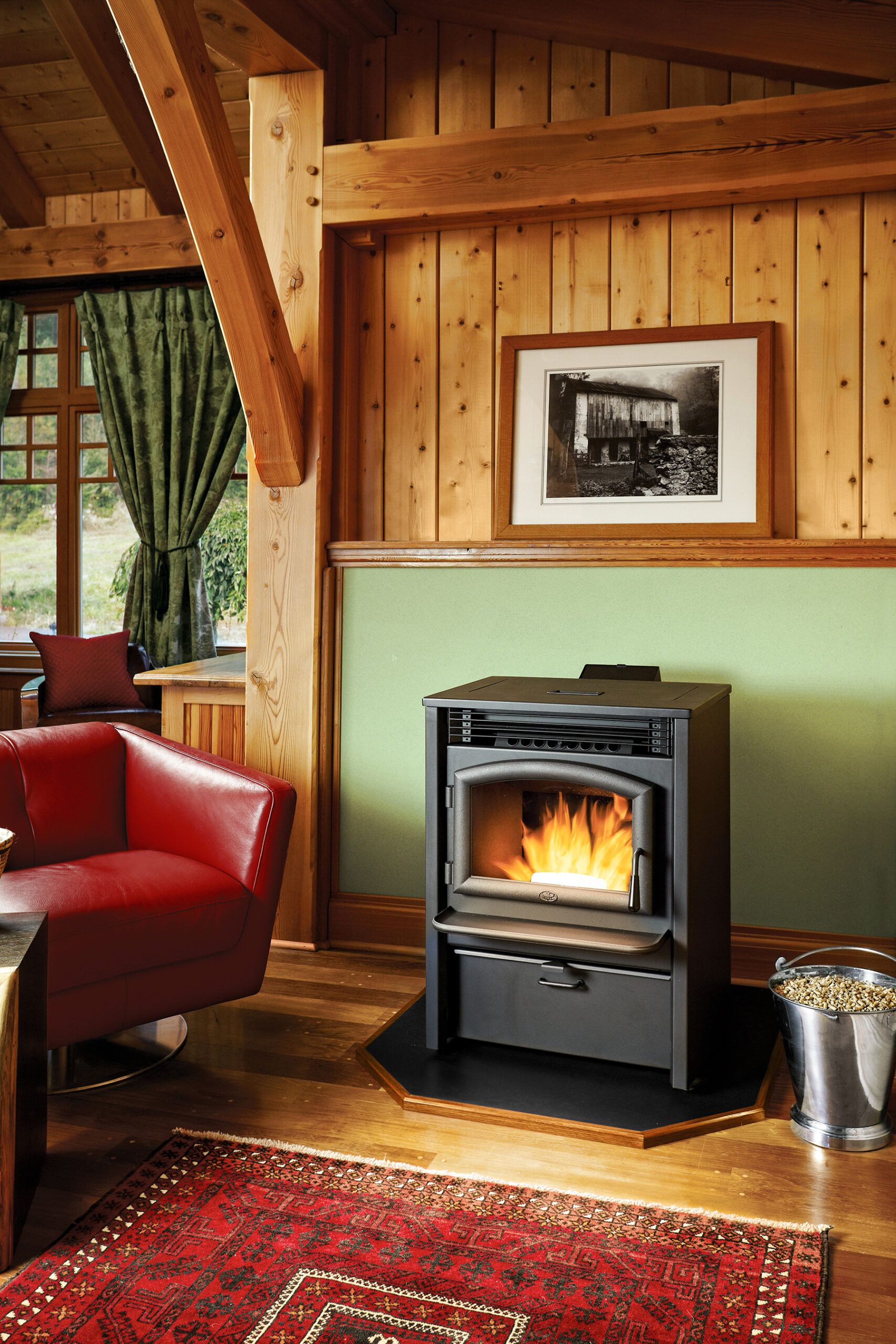Pellet stoves combine the cozy ambiance of a traditional wood stove with the convenience and efficiency of a traditional heater.
In this comprehensive guide, we’ll explore everything you need to know about pellet stoves, from how they work to their benefits and drawbacks. By the end, you’ll have all the information you need to decide if a pellet stove is the right choice for your home.
What Is a Pellet Stove?
A pellet stove is a heating appliance that burns compressed wood or biomass pellets to create heat. Unlike traditional wood stoves, many pellet stoves operate more like a modern furnace, with automated fuel feeding systems and thermostatic controls. They offer a clean-burning alternative to older wood-burning stoves and fireplaces, producing very little ash or emissions.
Pellet stoves can be freestanding units or inserts that fit into fireplaces. They’re designed to provide supplemental heat or, in some cases, serve as the primary heat source for a home. With their ability to burn renewable fuel efficiently, pellet stoves are an attractive option for environmentally conscious homeowners looking to reduce their carbon footprint and heating costs.
Components of a Pellet Stove
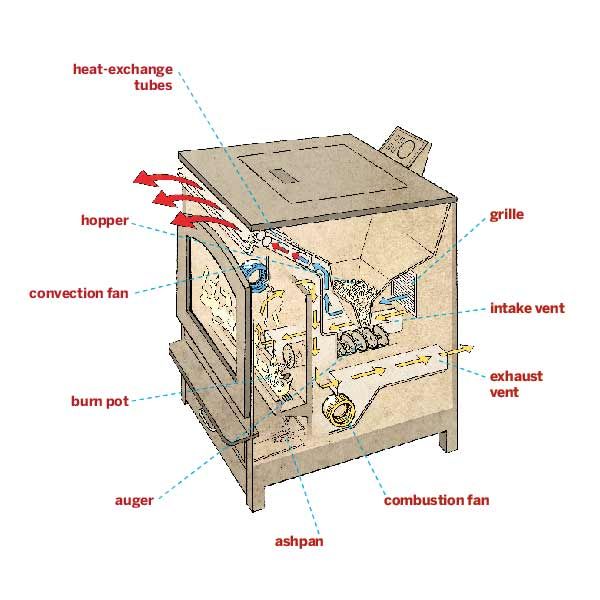
A pellet stove has several parts that work together to produce and distribute heat, including the following:
- Hopper: Stores the pellet fuel
- Burn pot: Where combustion occurs
- Auger: Automatically feeds pellets from the hopper to the burn pot
- Heat exchanger: Transfers heat from the fire to the room
- Convection fan: Circulates warm air into the living space
- Exhaust fan: Expels combustion gases and draws in fresh air
- Ash pan: Collects remains of unburnt pellets
- Control board: Manages the stove’s operations and temperature
To operate the pellet stove, you fill the hopper with pellets and set the desired temperature on the built-in thermostat. The auger, controlled by a circuit board, deposits pellets into the burn pot. A combustion fan draws in outside air and ignites the pellets, creating a high-temperature fire.
As the pellets burn, the heat exchanger captures the warmth, and a convection fan circulates this heated air into your living space. The exhaust fan simultaneously expels combustion gases through a vent pipe for efficient and clean burning. This process continues automatically to maintain your desired temperature.
Types of Pellet Stoves
Pellet stoves come in two main types: freestanding models and inserts. Each type has its pros and cons, catering to different home layouts and heating needs.
Pellet Stove Inserts
Pellet stove inserts are designed to fit into fireplaces. They’re an excellent option for homeowners who want to retain the look of their fireplace while significantly improving its heating efficiency.
Inserts like the Harman P35i model ($3,100) in the photo below can be fitted with a metal surround to match your hearth’s dimensions. While they may have a lower heating capacity than freestanding models, inserts are perfect for heating small or large rooms.
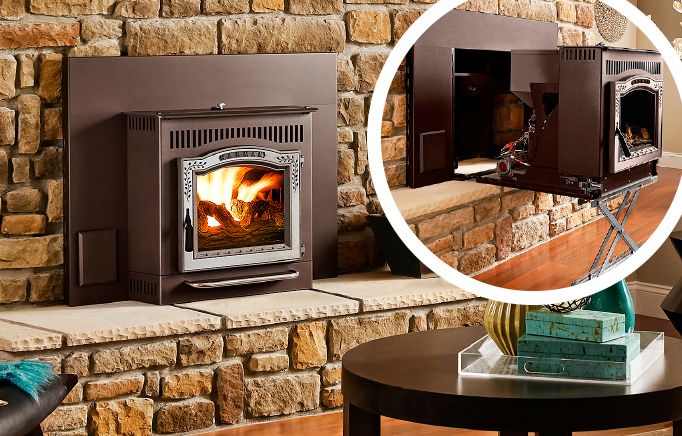
Freestanding Pellet Stoves
Freestanding pellet stoves are self-contained units that can be placed anywhere in your home. They offer flexibility and are ideal for open floor plans or rooms without existing fireplaces. These stoves typically have a larger heating capacity than inserts and can often heat multiple rooms or even an entire small home.
Freestanding models, such as the Harman XXV below ($5,240), can usually be placed 1 to 3 inches from the back wall and 6 to 7 inches from the sidewalls, making them suitable for tight spaces. They come in various styles to complement different interior designs, from traditional to contemporary.
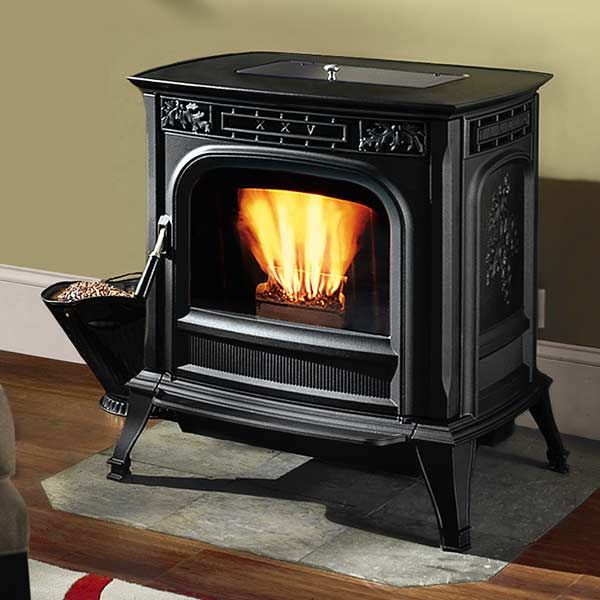
Benefits of Pellet Stoves
Pellet stoves offer several advantages that make them an attractive heating option for many homeowners. First, they offer impressive energy efficiency – much more than a traditional wood-burning fireplace, according to the EPA. This high efficiency is due to the stove’s controlled combustion process and the dense, low-moisture content of the pellet fuel.
Environmental Impact
The pellets used by pellet stoves are typically made from compressed sawdust and other wood waste products, making them a renewable resource. When burned, pellets produce very little smoke and minimal ash, resulting in lower emissions compared to traditional wood stoves.
The high-temperature combustion in pellet stoves also means they create no vent-clogging creosote, a common issue with wood-burning appliances. This clean-burning process helps maintain both indoor and outdoor air quality.
Cost-Effectiveness
While pellet stove installation costs between $1,015–$3,594, according to Angi, the long-term savings can be significant. In many cases, pellet stoves can pay for themselves within a few years through reduced heating costs, especially when compared to electric or oil heating.
Drawbacks of Pellet Stoves
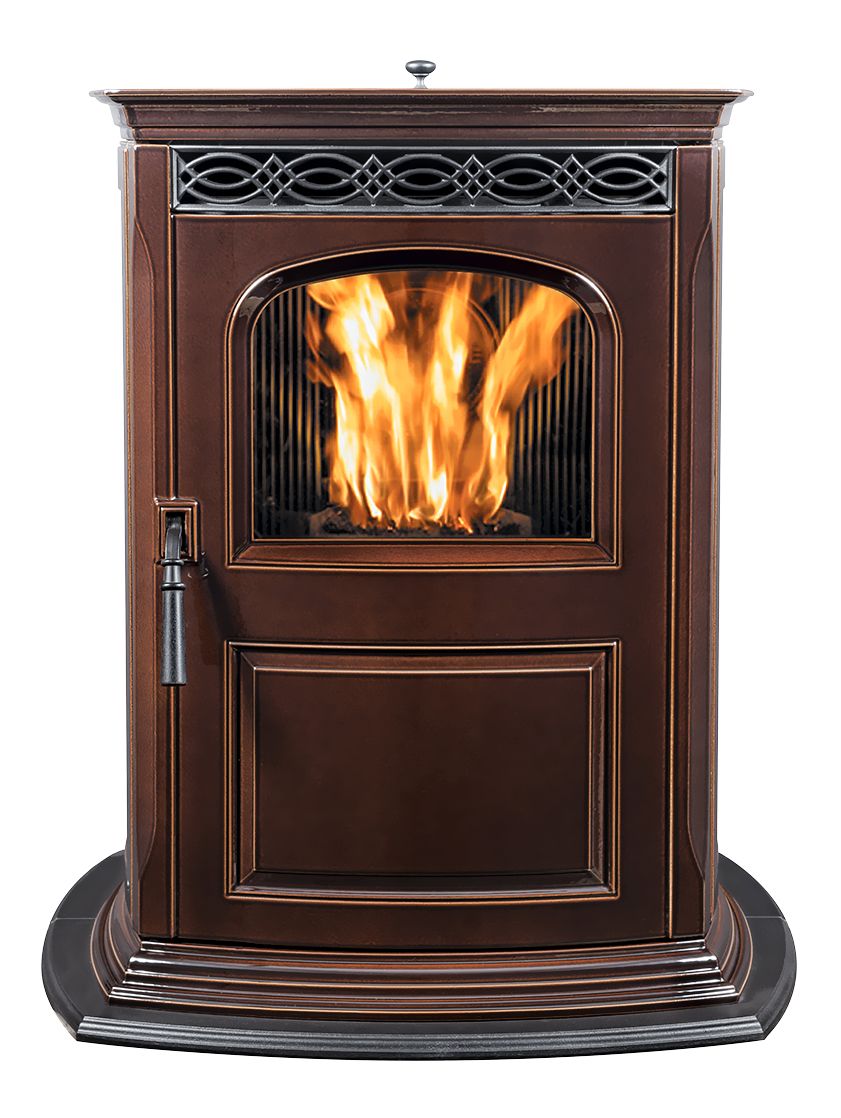
While pellet stoves offer many benefits, they also come with some drawbacks. Understanding these limitations can help you make an informed decision about whether a pellet stove is the right choice for your home.
Electricity Dependency
Unlike traditional wood stoves, pellet stoves need electricity to operate. This dependency means that during a power outage, your pellet stove won’t function unless you have a backup power source.
For homes in areas prone to frequent power outages, this can be a significant concern. Some manufacturers offer battery backup systems to address this issue, but it’s an additional expense to consider.
Maintenance Requirements
While pellet stoves generally require less frequent cleaning than wood stoves, they do need regular maintenance to operate efficiently, including the following:
- Daily: Checking the burn pot for clinkers (fused ash chunks)
- Weekly: Emptying the ash pan and cleaning the burn pot
- Monthly: Cleaning the heat exchanger and checking the door gasket
- Annually: Professional inspection and cleaning of the venting system
Neglecting these tasks can lead to reduced efficiency and potential malfunctions.
Fuel Storage Considerations
Pellet fuel requires proper storage to maintain its quality and efficiency. Unlike firewood, which can be stored outside, pellets must be kept in a dry, indoor location to prevent moisture absorption. This can be challenging for homeowners with limited storage space or living in humid climates.
A typical pellet stove might use 1-3 tons of pellets per heating season, depending on usage and climate. Storing this amount of fuel requires significant space, which may not be available in all homes. The need to regularly purchase and transport 40-pound bags of pellets could also be inconvenient for some homeowners.
Choosing the Right Pellet Stove
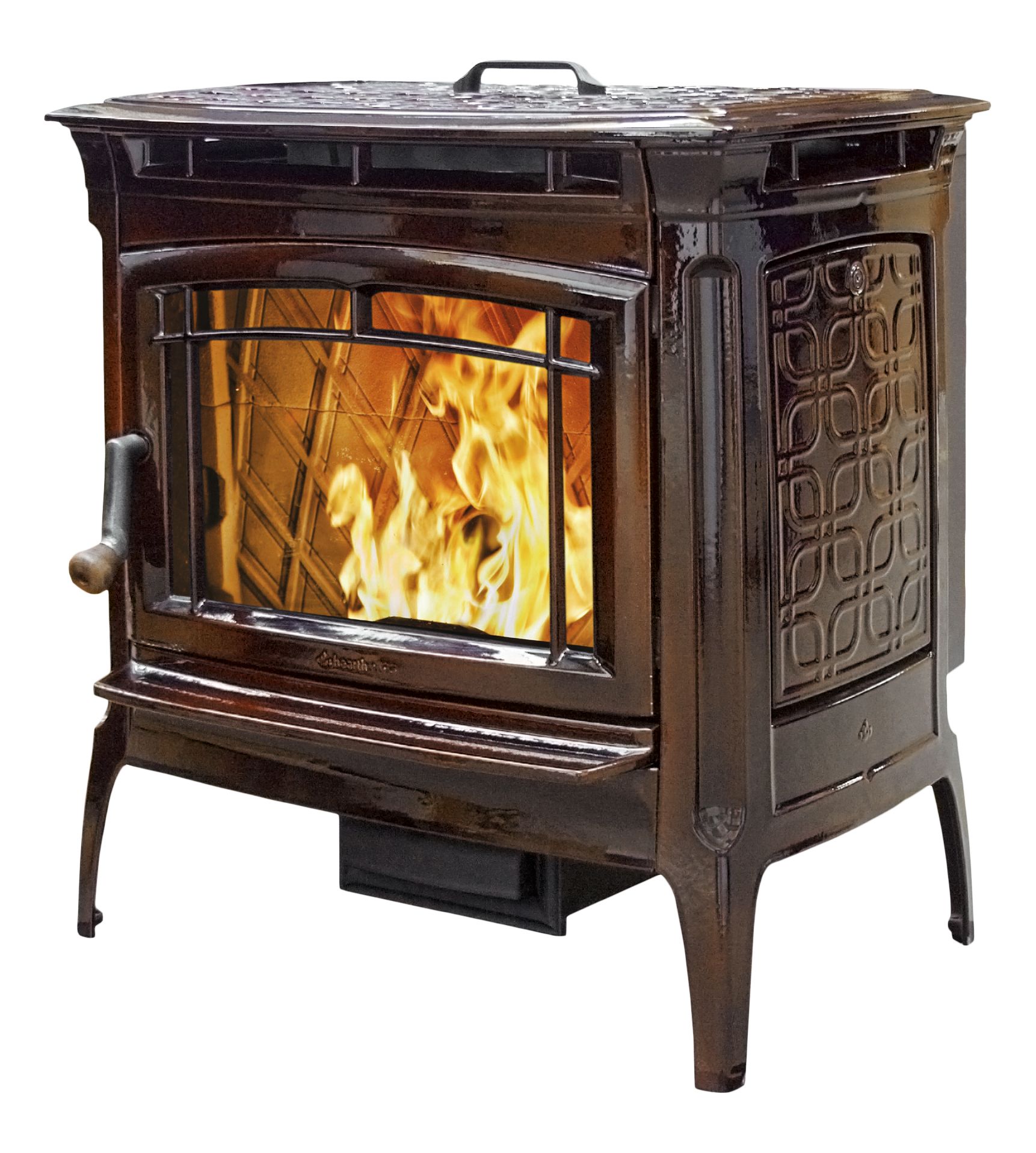
Several things should be considered before purchasing a pellet stove for your home. Here are key points to evaluate when making your choice.
Sizing Considerations
The size of the pellet stove you need depends on the area you want to heat. As a general rule, you’ll need about 5,000 British Thermal Units (BTUs) of heating power for every 200 square feet of living space. However, factors like your home’s insulation, ceiling height, and climate can affect this calculation.
It’s best to have a dealer visit your home and recommend a model based on your specific needs. Remember that the warmth from your stove will be concentrated in rooms closest to where it’s installed, so placement is important for effective heating.
BTU Output
BTU output is a measure of a stove’s heating capacity. Pellet stoves typically range from about 8,000 to 90,000 BTUs per hour. Here’s a rough guide:
- Small stoves (up to 20,000 BTUs): Suitable for heating a large room or small, open-plan home
- Medium stoves (20,000 to 60,000 BTUs): Can heat a small to medium-sized home
- Large stoves (60,000+ BTUs): Capable of heating larger homes or serving as a primary heat source
Hopper Capacity
The hopper is where you store the pellets that feed into the stove. A larger hopper means you’ll need to refill it less frequently. Hopper capacities typically range from about 40 to 120 pounds.
Consider how often you want to refill the hopper and how long you need the stove to run between refills. For example, a 40-pound hopper might need refilling every day or two with heavy use, while a 120-pound hopper could potentially run for a week or more before needing a refill.
Pellet Stove Installation and Venting Requirements
Pellet stoves need proper installation and venting. Understanding these requirements can help you prepare for the installation process and make sure your stove meets all necessary safety standards.
Professional vs. DIY Installation
While you may be tempted to install a pellet stove yourself, we recommend professional installation, as local building codes often require it. Professional installers have the expertise to do the following:
- Ensure proper clearances from combustible materials
- Correctly install venting systems
- Set up electrical connections safely
- Comply with local building codes and obtain necessary permits
Venting Options
Pellet stoves require proper venting to expel combustion gases and bring in fresh air. Unlike traditional wood stoves, pellet stoves can be vented horizontally through an exterior wall or vertically through the roof. Here are the main venting options:
- Direct venting: A pipe that goes straight out through an exterior wall
- Vertical venting: A pipe that extends up through the roof
- Chimney venting: Using a chimney liner to vent through an existing chimney
The venting system must be sealed tightly to prevent flue gases from entering the home. Most pellet stoves also require a separate intake pipe to bring in outside air for combustion, which helps improve efficiency and indoor air quality.
Pellet Fuel: What You Need To Know
The type and quality of pellets you use for your pellet stove can significantly impact its performance, efficiency, and maintenance requirements.

Types of Pellets
Pellets are typically made from compressed wood waste, such as sawdust. However, there are different types of pellets available, including the following:
- Hardwood pellets: These burn hot for extended periods, and they’re made from dense woods like oak and maple.
- Softwood pellets: These are made from pine or fir and are often less expensive than hardwood pellets but may burn faster.
- Blend pellets: These are a mix of hardwood and softwood pellets.
- Alternative biomass pellets: These pellets are made from materials like corn, switchgrass, or other agricultural waste.
The Pellet Fuels Institute grades residential and commercial pellets into three categories: premium, standard, and utility.
Pellet Quality and Efficiency
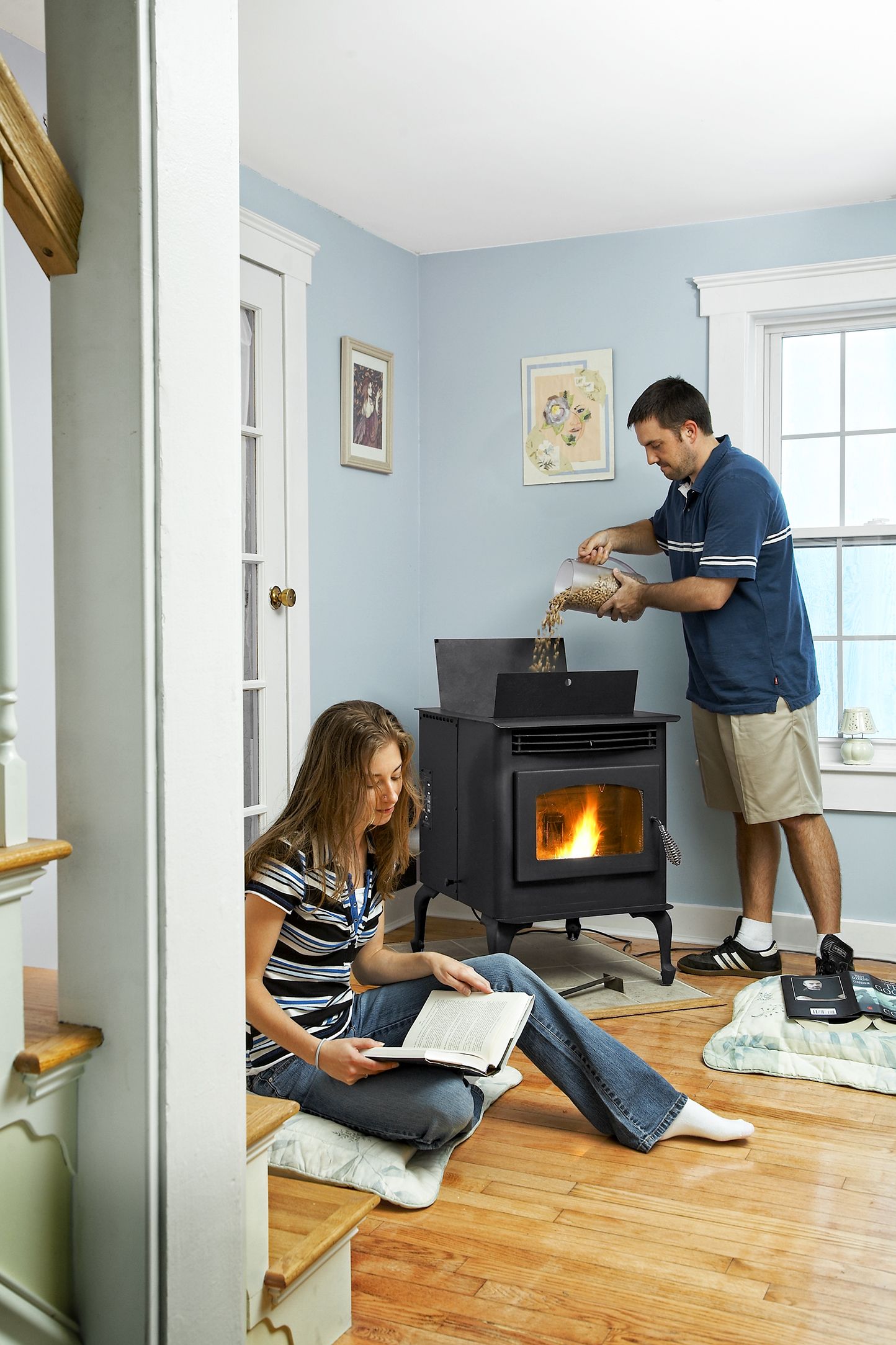
The quality of pellets can significantly affect your stove’s performance. High-quality pellets should meet the following specifications:
- Have low moisture content (5-10%)
- Produce minimal ash (less than 1%)
- Have few fines (dust) at the bottom of the bag (less than 0.5%)
- Contain less than 300 parts per million of sodium
Higher quality pellets may cost more upfront but can lead to better stove performance and less frequent cleaning.
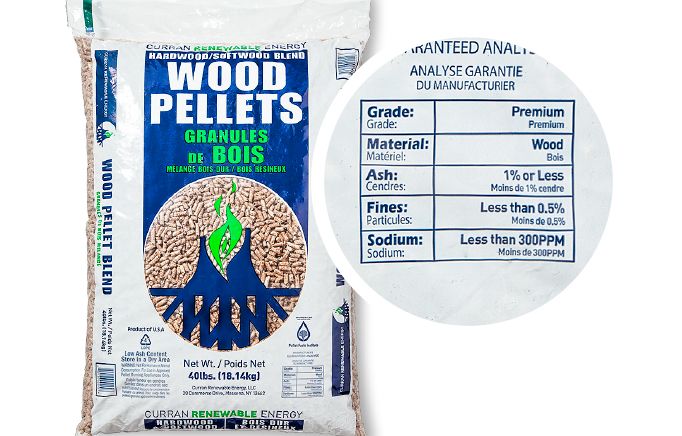
Storage and Handling
Proper storage is crucial to maintain pellet quality. Take the following steps when storing your pellets:
- Store them in a dry, indoor location to prevent moisture absorption.
- Keep bags off the ground and away from walls to allow air circulation.
- Consider bulk storage options if you use large quantities.
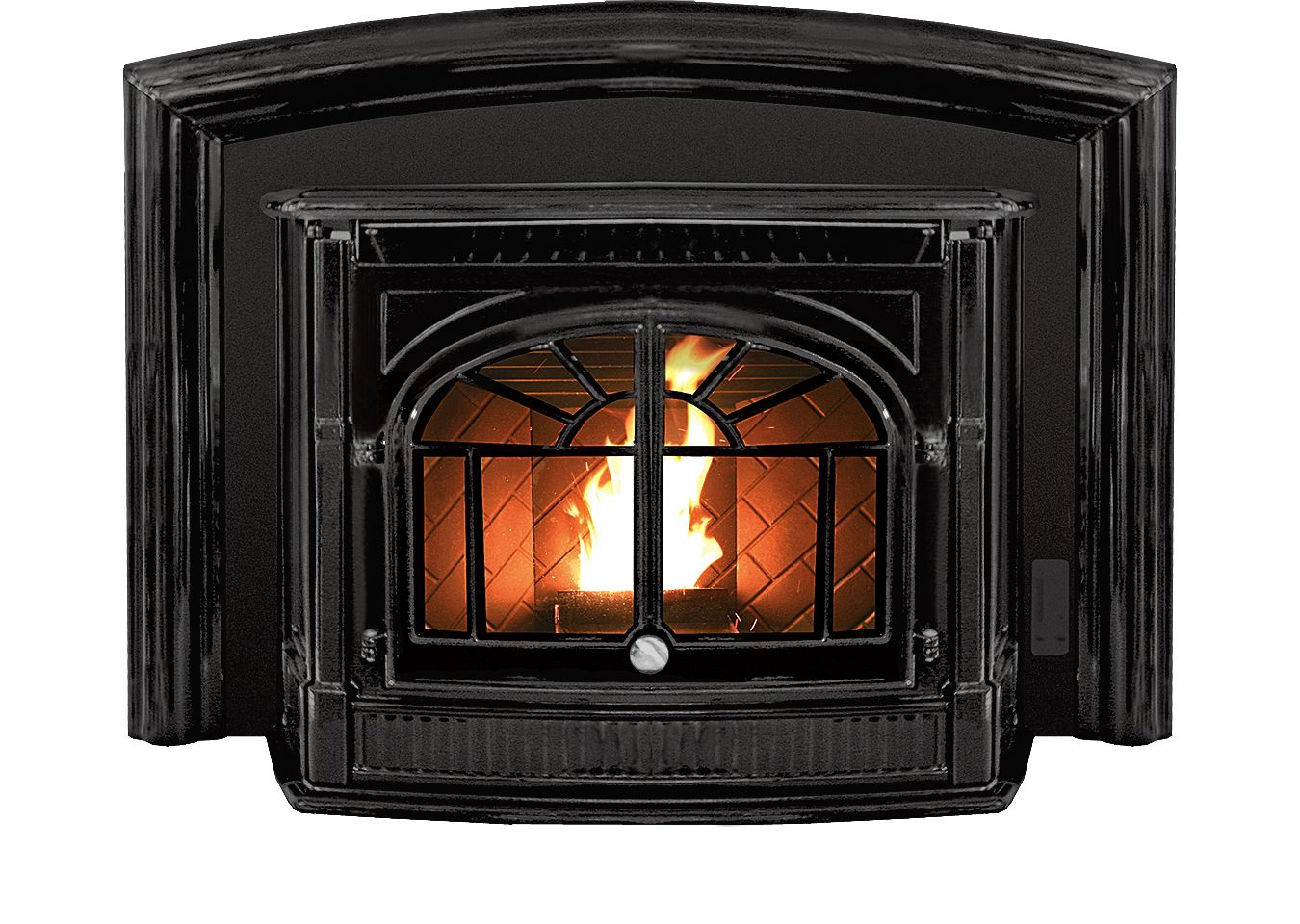
Annual Professional Pellet Stove Servicing
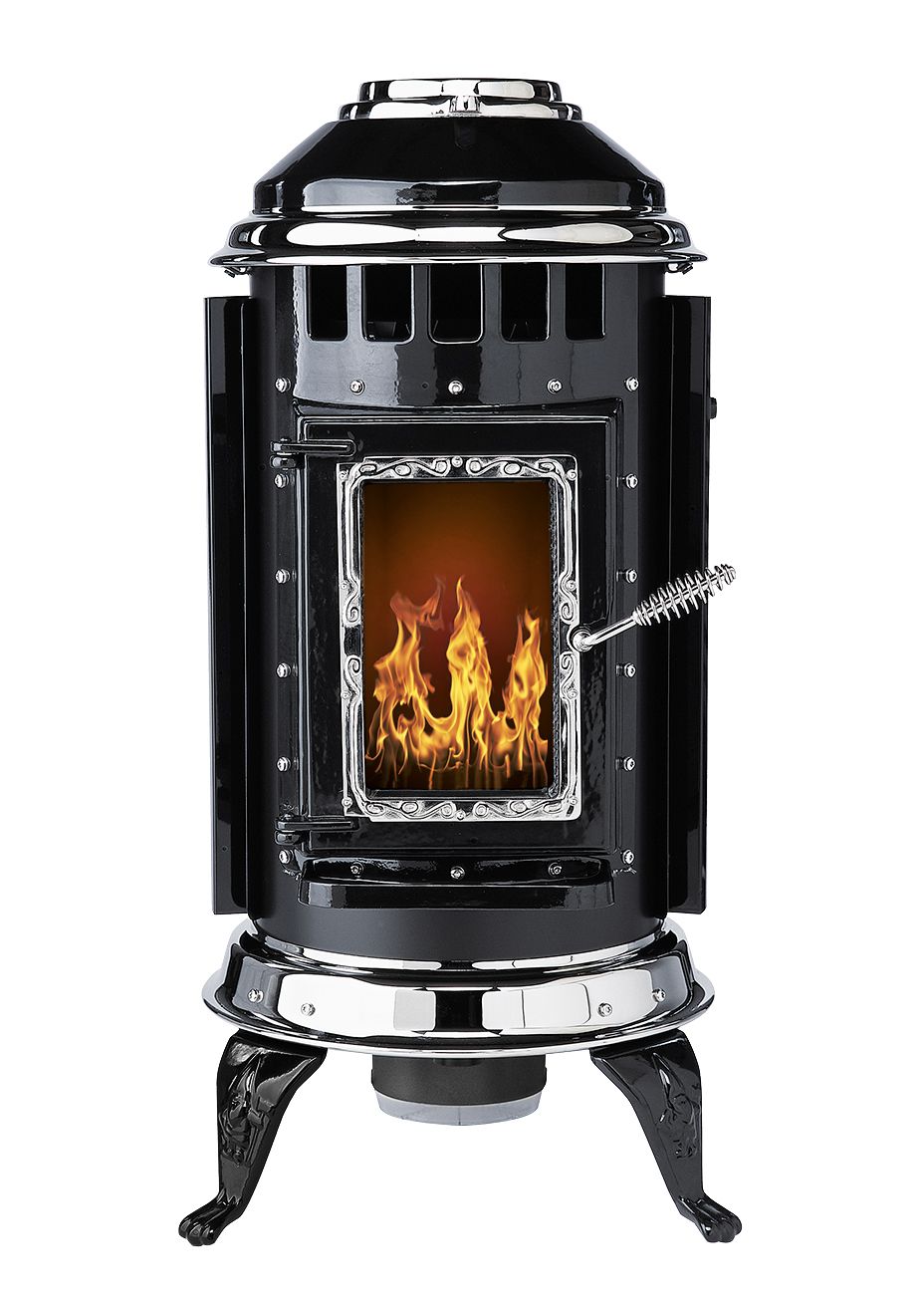
We suggest you reach out to a professional to complete an annual inspection. This service typically includes the following:
- A thorough cleaning of all components
- Inspection and cleaning of the venting system
- Checking and adjusting all mechanical parts
- Verifying proper operation of safety features
Regular maintenance not only keeps your stove running efficiently but can also extend its lifespan and prevent costly repairs.
Our Conclusion
Pellet stoves are an efficient, environmentally friendly, and cost-effective heating option for many homeowners. Their high efficiency, renewable fuel source, and automated operation make them an attractive alternative to traditional wood stoves and other heating methods. However, they do have some drawbacks, including reliance on electricity, regular maintenance requirements, and fuel storage considerations.
By carefully evaluating your home’s heating needs, your budget, and your preferences, you can determine whether a pellet stove is the right choice for you. Proper installation, regular maintenance, and using high-quality pellets will help ensure your pellet stove provides warmth and comfort for years to come.

